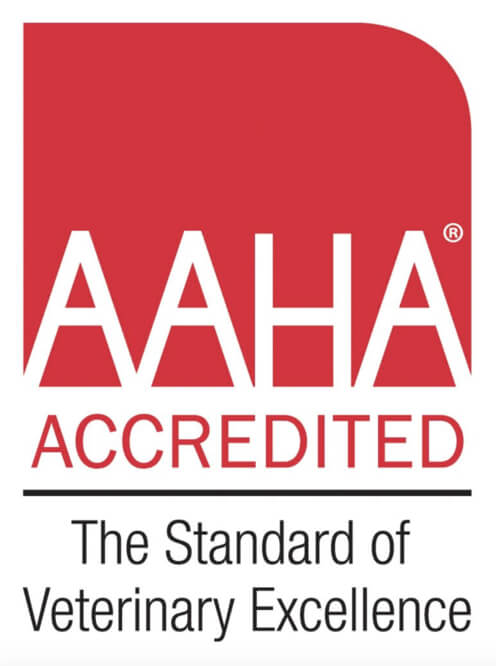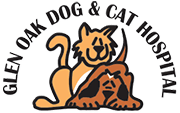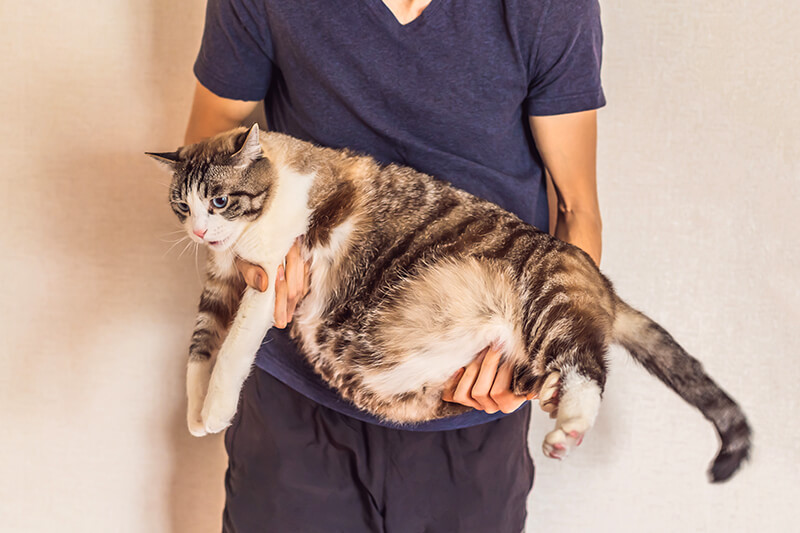
Obesity and its associated health problems has been a serious problem in humans in recent years, but did you know that it is also becoming an issue with our pets as well? A 2018 study conducted by The Association for Pet Obesity Prevention found that an estimated 60% of cats and 56% of dogs in the United States were overweight or obese. It can often be difficult for pet owners to recognize that their dog or cat is overweight, because they don’t understand what a proper weight for their pet should be or should look like. Also, as the obesity problem grows, what passes for “normal” is larger in appearance then perhaps should be. Your local veterinarian is the best place for you to get a proper and solid understanding about your pet’s weight and appropriate appearance.
What are the health issues associated with pet obesity?
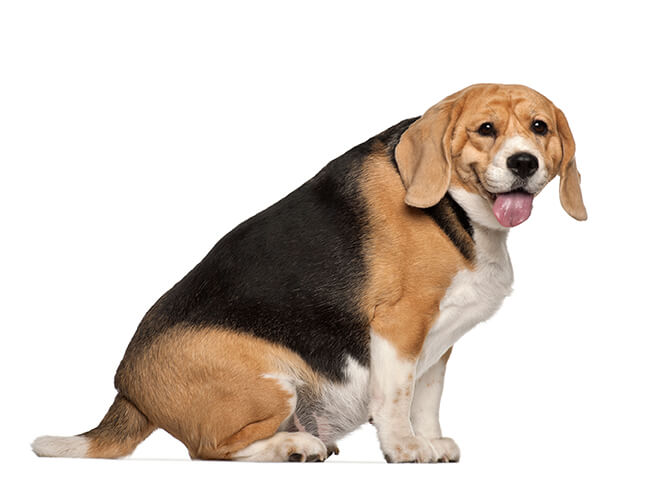 There are a host of resulting problems that can develop as a result of an animal having an unhealthy weight. Excess weight and adipose (fat) tissue in dogs and cats can contribute to a diminished quality of life and reduced life expectancy, in addition to being linked to serious diseases including:
There are a host of resulting problems that can develop as a result of an animal having an unhealthy weight. Excess weight and adipose (fat) tissue in dogs and cats can contribute to a diminished quality of life and reduced life expectancy, in addition to being linked to serious diseases including:
Diabetes Mellitus
In obese pets, as in human beings, excessive weight can contribute to a condition where insulin response no longer functions at adequate levels, insulin production is dramatically lessened or the production of insulin receptors is hindered, where the blood glucose cannot be properly and effectively processed and converted. This can lead to a host of associated problems including higher risk for cardiovascular disease. Studies have shown a direct correlation to the relationship between proper insulin production and function and longevity.
Osteoarthritis
Excessive weight can lead to extra stress on joints including knee, hip and back. If allowed to persist, there may be joint degeneration and chronic pain. It becomes a vicious cycle as an increase in joint pain leads to hindered mobility, ultimately exacerbating the obesity problem itself.
High Blood Pressure and Kidney disease
Doctors have been studying the link between obesity and hypertension. Systemic issues related to hypertension can affect vision, nervous system, irregular cardiovascular function. There is evidence that there is a relationship between hypertension and kidney disease as well.
Respiratory Issues
Obesity comes with an excess of adipose fat tissue, which can result in an extra layer around the chest cavity and abdomen that can constrict and hinder the breathing efforts of an obese animal. Normal movement and exercise can be compromised by labored breathing and fatigue. The reduction in activity can also add to the underlying obesity problem itself.
What are the causes of pet obesity?
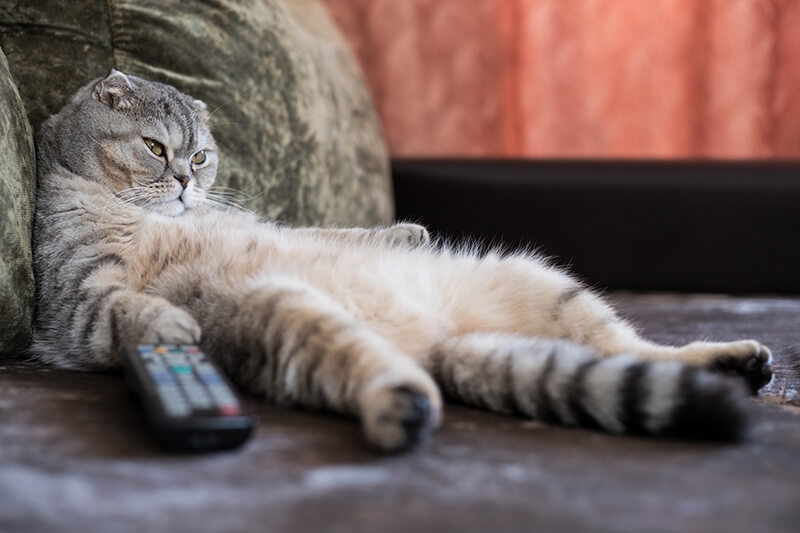
There are many factors and combinations of circumstances that can lead to a dog or cat becoming obese. Age, breed, genetics, neuter status, metabolism other health issues or conditions can all play a part in determining how likely an animal is to become obese. In addition to these physical traits, the pet owner’s behavior can influence the pet’s activity levels and food intake/portions. This is one area that can be managed a little easier, than say genetic predisposition.
What can I do as a pet owner?
The first step if you suspect that your pet may be suffering from obesity is to visit your local veterinarian and have them properly assessed. Your vet can also make personalized recommendations on how to get your pet back to a healthy weight based on their environment, condition and behaviors.
Some basic guidelines may include:
Food: Diet and Regulation
An animal’s food intake should be carefully accounted for by their owner. It is much more effective to serve in scheduled meals vs. leaving food out at all times. Portions ideally should be commensurate with guidelines established by a veterinarian consultation or recommendation. Short of that, however it is important for the pet owner to understand portion control and what makes up a portion. For example, when pet food serving sizes refer to recommended portions sizes in terms of cups, they are referring to an actual measured cup not whatever size scoop is being used to serve the food to the pet. These can vary greatly in size and volume!
Treats and Snacking
Everyone loves their pet and often use treats to bond or provide a reward. This is often reciprocated with affection from the pet, which can make it difficult to cut out. Just be aware that treats should not make up more than 10% of the pet’s overall food intake. Save them for special occasions and be conscious of the number and quantity of treats that are given at the time. Treats are treats because of the same reasons; treats like ice cream or cake are for humans. They are usually much higher in fat and calories and satisfy the taste buds more than normal food! Try to choose healthier snacks for your pets. Look for foods with less starchy fillers and more crude protein, but remember that these treats need to be managed and not be given in too great a frequency or quantity.
Exercise
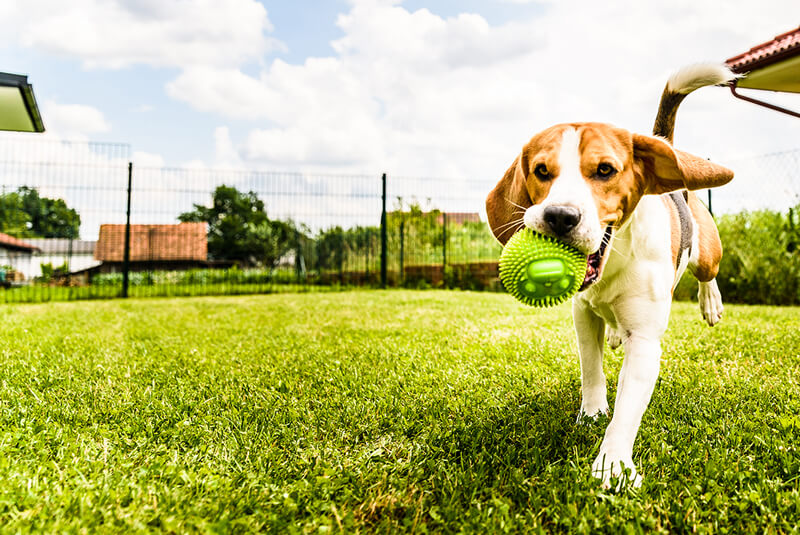
Daily exercise is important! For dogs, going for regular walks or runs around the block or at the park are a great way to get exercise in! Even playing fetch in the yard is better than laying around the sofa watching TV with your furry friend. Make an effort to be available to give them the necessary time to be able to exercise.
Cats, being cats often entertain themselves, but that doesn’t mean you can’t be engaged. Make sure that they have adequate space to move about and explore if they are indoor cats. You can be their exercise partner with toys, cat trees and laser pointers (be sure to never shine the beam directly into the cat’s eyes) Just be committed to playing with them for an adequate amount of time on a regular basis.
Observation and regular weigh-ins
It is very important that with all the changes you may be making with regards to diet, feeding schedule and exercise, that you track and measure your pet’s weight on a regular basis. Commit to having a regular weigh-in at pre-determined intervals.
This allows you to more effectively see If the actions you have been taking are not yielding the results you are looking for, then adjustments may be necessary to your plan, the type of food etc. Be sure to keep your vet in loop so they can evaluate the progress and make suggestions or recommendations.
